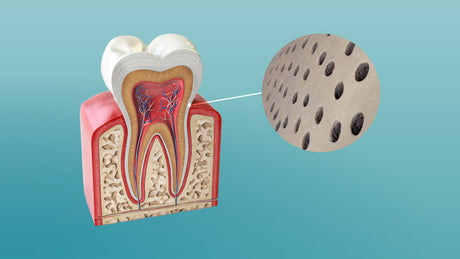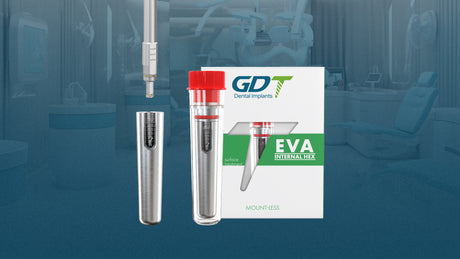Endodontics, a specialized branch of dentistry, focuses on the diagnosis, prevention, and treatment of diseases and injuries of the dental pulp and the tissues surrounding the root of a tooth. As a trusted provider of dental solutions, WholeDent.com is committed to equipping dental professionals with advanced products and knowledge in this vital area. This article delves into the core principles, techniques, and advancements in endodontics, providing a thorough understanding of this crucial field of dental practice.
Understanding Endodontics
Endodontics primarily deals with the treatment of the dental pulp and the tissues surrounding the roots of teeth. The most common procedure in endodontics is the root canal treatment, which is performed to save a tooth that has been severely damaged by decay or injury.
Key Components of Endodontic Treatment:
- Dental Pulp: The innermost part of the tooth contains nerves, blood vessels, and connective tissue.
- Root Canal System: The natural cavity within the center of the tooth where the pulp is located.
- Endodontic Therapy: The treatment to remove infected or inflamed pulp, clean the root canal, and seal it to prevent further infection.
The Root Canal Procedure
- Diagnosis and Planning: Comprehensive examination and imaging to determine the extent of the infection and plan the treatment.
- Anesthesia: Local anesthesia is administered to numb the affected area.
- Access Opening: An opening is made in the crown of the tooth to access the pulp chamber.
- Pulp Removal: The infected or damaged pulp is removed, and the root canal is thoroughly cleaned and shaped.
- Disinfection: Antimicrobial solutions are used to disinfect the root canal.
- Filling and Sealing: The cleaned canal is filled with a biocompatible material, typically gutta-percha, and sealed with adhesive cement.
- Restoration: A crown or filling is placed to restore the tooth's structure and function.
Advanced Techniques in Endodontics
Modern endodontic treatments incorporate a variety of advanced technologies and materials to enhance precision, efficiency, and patient outcomes. The following table provides an overview of key products and solutions commonly utilized in contemporary endodontic practice:
|
Technology/Product |
Description |
|
Digital Imaging |
High-resolution imaging systems, such as cone-beam computed tomography (CBCT), offer detailed views of the root canal anatomy, aiding in accurate diagnosis and treatment planning. |
|
Rotary Instruments |
Nickel-titanium (NiTi) rotary files enable efficient and precise cleaning and shaping of the root canal, reducing treatment time and improving consistency. |
|
Apex Locators |
Electronic devices that accurately determine the working length of the root canal, minimizing the risk of over- or under-instrumentation. |
|
Ultrasonic Instruments |
Tools that facilitate thorough cleaning and the removal of obstructions within the root canal system, enhancing the debridement process. |
|
Bioceramic Materials |
Advanced materials used for root canal sealing and repair, offering excellent sealing properties, biocompatibility, and promoting healing. |
Benefits of Root Canal Treatment
- Pain Relief: Eliminates the source of infection and relieves pain caused by inflammation or abscess.
- Preservation of Natural Teeth: Saves teeth that would otherwise need to be extracted, maintaining natural function and appearance.
- Improved Oral Health: Prevents the spread of infection to adjacent teeth and tissues.
- Cost-Effective: Root canal treatment is often more affordable than extraction and replacement with implants or bridges.
Challenges in Endodontics
Despite the advancements in endodontic techniques, several challenges persist:
- Complex Anatomy: Variations in root canal anatomy can complicate treatment.
- Infection Control: Ensuring complete disinfection of the root canal system is critical to prevent reinfection.
- Instrument Fracture: Rotary instruments, though efficient, can fracture within the canal, posing a challenge for removal.
- Post-Treatment Discomfort: Patients may experience temporary discomfort following the procedure, which needs to be managed effectively.
WholeDent’s Endodontic Solutions
WholeDent.com is dedicated to providing dental professionals with top-tier endodontic products and resources:
- Endodontic Instruments: High-quality hand and rotary instruments designed for durability and precision.
- Disinfection Solutions: Effective antimicrobial agents to ensure thorough root canal disinfection.
- Filling Materials: Biocompatible and reliable materials for sealing and filling root canals.
- Endodontic Equipment: Advanced devices, including apex locators, ultrasonic units, and digital imaging systems, to enhance treatment efficiency and accuracy.
Conclusion
Endodontics plays a vital role in preserving natural teeth and maintaining oral health. By leveraging the latest advancements and high-quality products from WholeDent.com, dental professionals can deliver superior endodontic care. Our commitment to excellence ensures that you have access to the best tools to achieve successful patient outcomes.
Q&A: Expert Insights into Endodontics
What are the signs that a patient might need a root canal treatment?Common signs include severe toothache, prolonged sensitivity to hot or cold, swelling and tenderness in nearby gums, darkening of the tooth, and the presence of a persistent pimple on the gums. These symptoms indicate potential infection or inflammation of the dental pulp.
How do advancements in endodontic instruments enhance treatment outcomes?
Advancements in endodontic instruments, such as nickel-titanium (NiTi) rotary files and ultrasonic devices, have significantly improved treatment outcomes. These tools allow for more precise and efficient cleaning and shaping of the root canal, reducing treatment time and improving the quality of the procedure. Additionally, advanced sealing materials and biocompatible cements ensure a better seal and promote healing, leading to more successful long-term results for patients.
How do high-quality dental cements and sealants contribute to successful endodontic treatments?
High-quality dental cements and sealants, such as those offered by WholeDent, play a crucial role in the success of endodontic treatments. These advanced materials provide excellent sealing properties, ensuring that the root canal is properly sealed to prevent reinfection. Additionally, their biocompatibility promotes healing and integration with the surrounding tissues, leading to more predictable and durable treatment outcomes.
How do bioceramic materials enhance the success of root canal treatments?
Bioceramic materials used in endodontics, such as sealers and repair cements, provide superior sealing ability, biocompatibility, and promote healing. They have excellent physical properties, are resistant to microbial infiltration, and can adapt well to the complexities of the root canal system.
What steps can be taken to prevent instrument fracture during endodontic procedures?
To minimize the risk of instrument fracture, it is important to use instruments according to the manufacturer’s guidelines, avoid excessive force, ensure proper irrigation to prevent binding, regularly inspect instruments for signs of wear, and use a gentle, controlled motion during canal preparation.
Can teeth that have undergone root canal treatment still get infected?
While root canal treatment has a high success rate, there is still a risk of reinfection if the root canal is not properly sealed, if new decay forms, or if a crack or fracture occurs in the treated tooth. Regular dental check-ups and good oral hygiene practices are essential to monitor and maintain treated teeth.
How do endodontists handle cases of failed root canal treatments?
In cases of failed root canal treatments, endodontists may perform a retreatment, which involves removing the old filling material, cleaning and disinfecting the canal, and resealing it. In more complex cases, an apicoectomy (surgical removal of the root tip) or extraction may be necessary.
What role does patient education play in successful endodontic outcomes?
Educating patients about the importance of endodontic treatment, the steps involved, and post-treatment care is crucial for successful outcomes. Informed patients are more likely to follow care instructions, attend follow-up appointments, and maintain good oral hygiene, reducing the risk of complications.
How does WholeDent.com support dental professionals in endodontics?
WholeDent.com supports dental professionals in endodontics by offering a comprehensive range of high-quality products, including instruments, disinfection solutions, filling materials, and advanced equipment. We also provide exceptional customer service and technical support to ensure that dental professionals have the tools and assistance they need to achieve the best possible outcomes for their patients.
What are the future trends in endodontic treatment?
Future trends in endodontics include the integration of more sophisticated digital technologies, such as augmented reality for enhanced visualization, the development of more biocompatible and regenerative materials, and continued improvements in minimally invasive techniques to preserve natural tooth structure and enhance patient comfort. WholeDent.com remains committed to staying at the forefront of these innovations to provide the best solutions for dental professionals.














